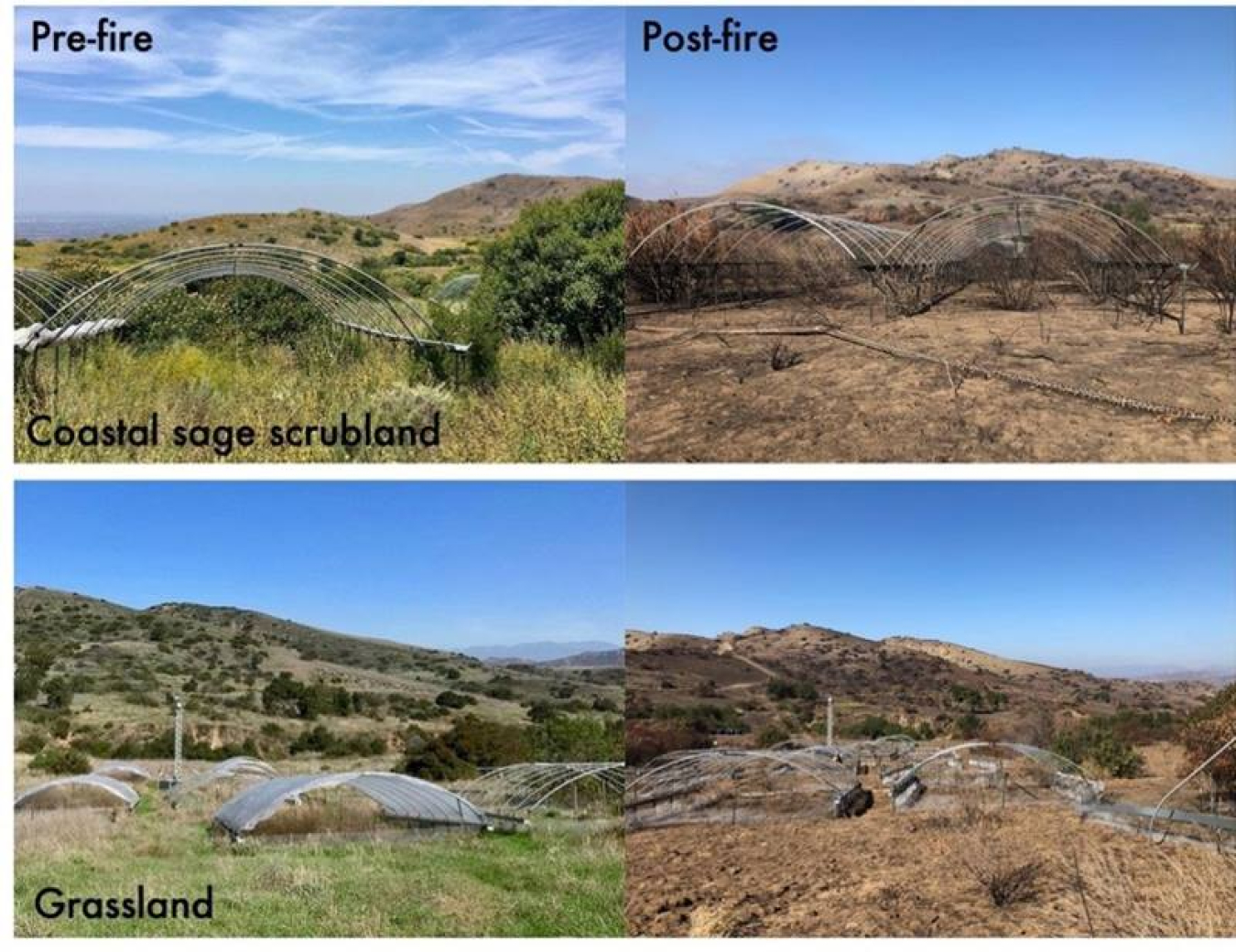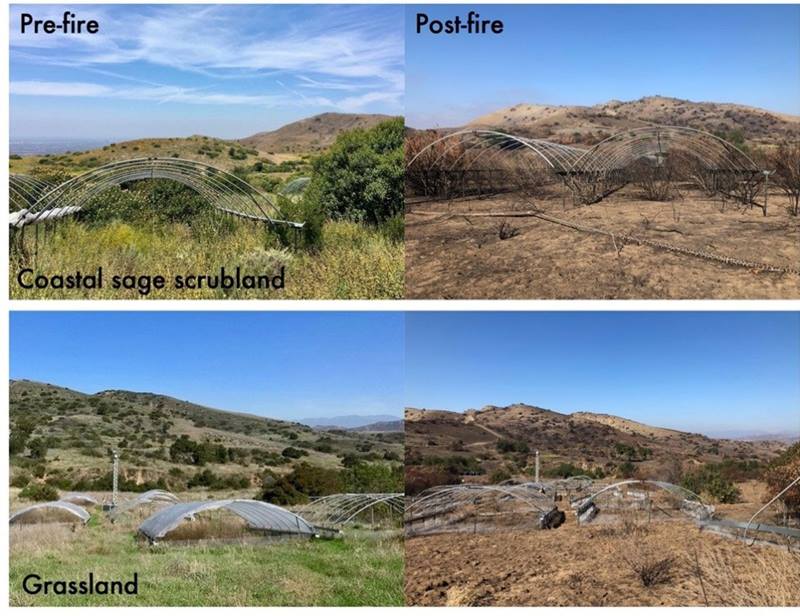
The Science
Bacteria in surface-level soil affect the global carbon cycle. These microbes break down dead leaves and stems, pumping carbon into the atmosphere and the soil. However, microbes are sensitive to changes in their environment. Predicting how the carbon cycle may shift under climate change requires scientists to understand how soil microbes respond to environmental shocks such as drought and wildfire. However, scientists do not know how deep these disruptions penetrate below the soil surface to affect microbes. This study found that bacterial communities closer to the soil surface were more sensitive to drought and fire. These results mean that deeper soils may serve as a refuge for bacterial communities living through environmental disturbances like wildfire.
The Impact
Microbiologists often treat the surface soil—the top 10 cm—as a uniform layer. However, this study shows that bacterial communities respond to environmental changes in a depth-dependent manner. Microbial communities just 1 cm below the soil surface are surprisingly resilient to fires that burn through grasslands and shrublands. This could help stabilize nutrient cycling in the soil, potentially promoting ecosystem health and recovery over time.
Summary
This study tested how bacterial communities near the soil surface reacted to drought and wildfire, two disturbances that are expected to become more frequent and intense in many parts of the world. The researchers collected samples from three depths: the leaf litter layer on the soil surface, the top 2 cm of soil, and the top 10 cm of soil. They collected samples before and as long as one year after a fire that burned through the Loma Ridge Global Change Experiment, a field study in California that has been mimicking drought in a semi-arid grassland and adjacent coastal sage scrubland for more than a decade. Using 16S amplicon sequencing, the researchers monitored bacterial community composition and assessed how the community changed with drought, fire, and soil depth over time.
The researchers found that bacterial communities in leaf litter and surface soil layers were sensitive to these environmental factors. However, the effects diminished with depth. For instance, bacterial community sensitivity to drought was three times greater in the leaf litter layer than in the top 10 cm of soil. Additionally, wildfire altered the bacterial community composition in the leaf litter layer but did not affect communities in the soil. Interestingly, bacterial communities in the soil tolerated fire similarly regardless of whether they had been previously exposed to drought. These results are important because bacteria in litter and surface soil process, store, and respire carbon. Also, nutrients can move throughout the soil when it rains, so shocks to microbes in one part of the soil can have cascading effects on other parts. Knowing that microbes just below the soil surface may be sheltered from drought and fire offers a glimmer of hope that vital microbiome benefits like carbon cycling may be resilient to a changing climate.
Contact
Kristin Barbour
Department of Ecology and Evolutionary Biology
University of California, Irvine
[email protected]
Jennifer B. H. Martiny
Department of Ecology and Evolutionary Biology
University of California, Irvine
[email protected]
Funding
This work was supported by the Department of Energy Office of Science, Office of Biological and Environmental Research.
Publications
Barbour, K.M., et al. Bacterial community response to environmental change varies with depth in the surface soil. Soil Biology and Biochemistry 172, 108761 (2022). [DOI: 10.1016/j.soilbio.2022.108761]
Scraped from https://www.sourcearu.com




